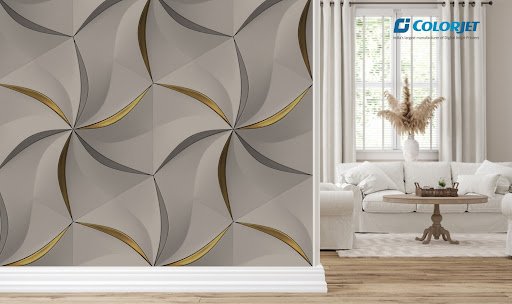In the sixteenth century, European wallpapers were painted with popular religious icons. The poor and devout used hand-block-printed papers, which were expensive. Then, the middle class adopted the wallcovering, which resembled tapestries hung in the houses of the nobility. The design was created in a way that small sheets carried a repeating image, and multiple blocks produced a pattern spread across many sheets. The eighteenth-century American bourgeoisie began purchasing these wallpapers from England and France. In the early nineteenth century, the first commercial printers produced these wallpapers.
The printing process begins by creating a source file with high resolution. High resolution is important for stock images, which should be set at maximum resolution to ensure faithful reproduction at large sizes. In addition, a digital camera’s resolution should be set to maximum to eliminate pixelation and blurring. Vector art, on the other hand, does not require resolution to create a high-quality print. While the original image is being made, the resolution is important for a successful wallpaper print.
A high resolution is essential for a high-quality wallpaper print. The highest resolution possible is important for stock images, which will be printed at large sizes. The resolution is also important for digital photographs, as it helps ensure faithful reproduction. You should also make sure that your camera is set to its maximum resolution, or use a vector image instead. However, not all digitally printed paper is the same quality. If you’re concerned that your image might come out pixelated, consider hiring a professional photographer who can provide the highest quality wallpapers.
Unlike stencils, and blocks, silk-screen printing can be customized to match your home decor. This type of custom wallpaper will be easier to install than pasted wallpaper. With a Roland DG print technology, you can even customize wallpaper to fit a specific design or style. These designs are often more expensive than plain paper, so they should be made with care. It will take more time and patience, but it will definitely give you an amazing result.
Fortunately, wallpaper printing is an inexpensive process. The best-looking wallpapers are those that have an appealing design, and not just a single design. While the majority of wallpapers are printed using a single color, others can have multiple colors or patterns. The difference in color is the size of the printing plates. And in some cases, the image is not the only thing to consider. When choosing your design, it’s important to find the right combination.
Using the right printing process can make a huge difference. A printer should be able to customize wallpaper to match your home’s decor. If you’re looking for a unique design, try finding a designer who specializes in wallpaper printing. They will have a range of designs and styles for you. There’s no better way to decorate a room than with a printed wallpaper! Just remember to select wallpaper with care.
There are several types of wallpaper printing processes. The most expensive method is rotary printing. The latter is more labor-intensive, and you have to wait for your print to dry. The only other choice is digitally printed wallpapers. While digital printing is the least expensive option, there are risks associated with it. Some digitally printed wallpapers may be pixelated, while others may be inferior to offset printing. Regardless of the method used, there are a number of advantages to this process.
Wallpaper printing machine uses several different printing methods. Some of the more common ones are silk-screen and gravure printing. Usually, a pattern is printed on a wall-paper that has been shaped into rectangles and placed in the space. For example, a patterned wallpaper would be cut into multiple pieces. If one piece of paper is not enough, you can simply cut the remaining pieces of paper and continue the pattern. This process is known as overprinting.
Wallpapers are printed by using several methods. The most common method is rotary printing, which is less labor-intensive and allows you to produce a large volume at low cost. This method is best for large-scale wallpaper printing. The only drawback is that you can’t control the size of the wallpaper. This is not a good option for small-scale printing. But you can still get some unique designs with this process. In this way, you can choose a pattern that has high quality prints for a lower price.


